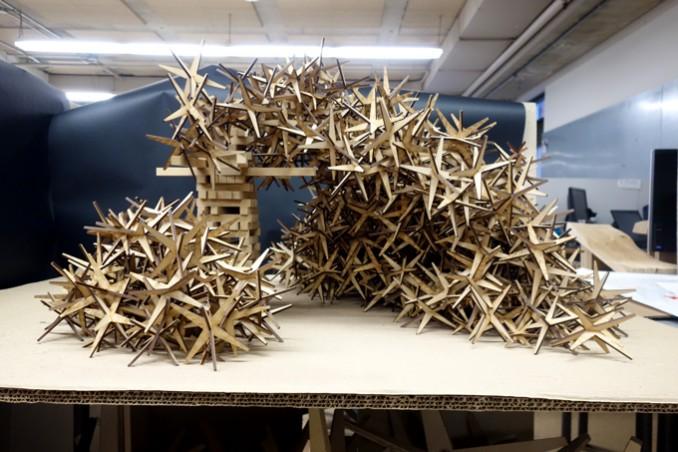By Noella Ovid
Ryerson University’s department of architectural science has two winners in the 2016 Winter Stations design competition.
The installations being displayed in next month’s exhibition are Lithoform by Rémi Carreiro and Aris Peci and Flow by Victor Huynh and Calvin Fung.
The second annual design competition requires architects to convert lifeguard stands into temporary pavilions, while responding to Toronto’s long and unpredictable winters in this year’s theme of freeze/thaw. The exhibition is set to run around lifeguard stands from Feb. 13 to March 20 across the Kew, Scarborough and Balmy Beaches.
Brought together by RAW Design, Ferris + Associates and Curio, the winter festival was created to encourage Torontonians to celebrate the city’s winter waterfront landscape.
“We knew the city had little money for such things as new lifeguard stands, why not run a competition to get new ones?” wrote Ted Merrick, director of Ferris + Associates, via email.
A total of seven teams have been selected to build their shelters in the upcoming exhibition.
“Our students look not only at design but ability to design, as opposed to just designing a pretty picture,” said Vincent Hui, the professor behind Ryerson’s teams.
Fourth-year undergraduate students Carreiro and Peci entered the competition in the academic category as Ryerson University’s faculty of engineering and architectural sciences. The team used Rhinoceros, a 3D modeling program, to create their piece with everything designed to minimize the amount of construction done outside in the cold weather.
“We wanted to contribute something contextually relevant to our climate and location. With that in mind, we developed a design influenced by the effects of frost wedging, where the continual freezing and thawing of water forms gradually deeper fissures in stone,” Carreiro said via email.
Lithoform is designed to mimic the process of frost formations with wedge-shaped chimneys that allow colourfully filtered light through to the interior wood structure.
“Architecturally, our installation offers a more hands-on experience for the user. It allows them to engage with the installation and touch it, feeling the soft interior in sharp contrast to the hard exterior shell,” Peci wrote via email.
Graduates Huynh and Fung were also chosen by the jury for being successful in the international category.
Based on redesigning the singular ice crystal, they aimed to create Flow — spiky, slot-fitted wood connections that mimic the geometry of snowflakes.
The shelter will take a wave-like form with a partial arch, resembling domed snow structures like the quinzee (a shelter made by hollowing out a pile of settled snow). While there is no single type of final design outcome, the changing properties of the star-shaped module are to reflect the relationship between solid and liquid water.
“The material is able to exhibit that theme of freezing and thawing being fluid and loose, but also freezing together and being solid,” Fung said.
They have entered their design into competitions and Fung will be using it for his thesis project.











Leave a Reply